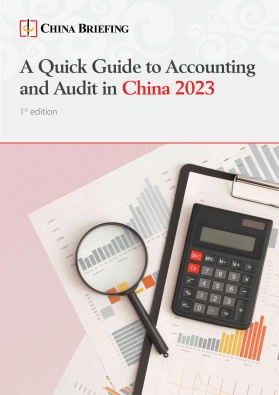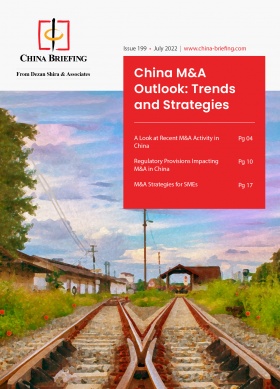China Import and Export Licensing Management in 2023: List of Goods Impacted
Since the start of 2023, new rules and regulations are set to impact the operations of foreign businesses in China. Among others, China has announced adjustments to export and import administration, such as simplifying registration procedures and lowering tariffs.
In this article, we discuss which goods will be subject to import and export licensing management in 2023 under the updated regulation.
China’s import and export licensing framework
China’s customs authorities will require a trading company to be equipped with proper import and/or export licenses based on the specific category of goods being traded.
While most goods are permitted to be imported and subjected to an automatic licensing system, China does restrict or prohibit some goods from importation. Restricted goods are monitored via quotas or licenses.
The Ministry of Commerce (MOFCOM) and the General Administration of Customs (GAC) release the catalogues of goods that are subjected to automatic import licensing and import licensing on an annual basis, and release catalogues of goods that are prohibited from import from time to time.
For exported goods, those restricted from export are subject to the export licensing management. Among the export-restricted products, some are subject to additional quota management. MOFCOM and GAC jointly release a catalog of export goods requiring licenses on an annual basis.
For technologies, those restricted or prohibited from import are stipulated in the Catalogue of Technologies Prohibited and Restricted from Import in China and those restricted or prohibited from export are stipulated in Catalogue of Technologies Prohibited and Restricted from Export in China. Both catalogues are maintained by MOFCOM.
Moreover, for dual-use items and technologies, China implements a separate licensing system, as stipulated in the Catalogue of Import and Export Licenses for Dual-Use Items and Technologies. Dual-use items and technologies refer to sensitive and potentially dangerous products or technologies capable of dual military and civil application. Dual-use products on the directory include chemicals, radioisotopes, weapon-related items and technologies, commercial cipher codes, etc.
Below, we summarize China’s import and export licensing framework in a table.
| China’s Import and Export Licensing Management Schemes | ||
| Type of commodities | Import/export | Management |
| General goods | Import | Automatic import licensing management:
|
Import licensing management:
|
||
Tariff rate quota (TRQ) management:
|
||
| Export | Export licensing management:
|
|
Export quota management:
|
||
| General technologies | Import |
|
| Export |
|
|
| Dual-use items and technologies | Import/export |
|
MOFCOM also release a list of authorized import & export license issuing agencies annually. A complete List of License-issuing Agencies for Import and Export Licenses in 2023 can be found here.
What are the 2023 adjustments to China’s import and export licensing management?
Starting on January 1, 2023, four adjusted catalogues regarding import and export have taken effect, issued jointly by the MOFCOM and GAC in China. We explain briefly below.
Catalogue of goods subject to automatic import licensing administration (2023)
The 2023 automatic import licensing catalogue covers a total of 45 categories of goods, including food products, mechanical and electronic products, ore, chemical products, and medical products, etc. Compared to the 2022 catalogue, perchloroethylene (PCE) was newly added to the catalogue. PCE is used as a raw material for refrigerants. Around 30 percent of China’s PCE are imported.
Please find the complete catalogue of goods subject to automatic import licensing management here.
Catalogue of goods subject to import licensing administration (2023)
Similarly, the 2023 import licensing catalogue has also been updated, covering a total of 14 categories of import goods in chemical equipment, machines, ships, etc. There are some small adjustments, including a few chemical items that have been added under the “ozone depleting substances” category, while the custom series numbers are altered under the “electric power equipment” category.
Please find the complete catalogue of goods subject to import license management here.
Catalogue of goods subject to export license administration (2023)
The 2023 export license catalogue covers a total of 43 categories of export goods, including food, raw materials, equipment, and manufactured goods. While most of the content remains the same as the previous edition, there are a few newly added products under chemical, ozone-depleting substances, sawn timber, and automobile categories. Certain rare earth materials and lubricating oil products will continue to face restrictions on exporting.
As China gradually recovers from the impact of COVID-19 in 2023, the domestic supply chain is expected to stabilize and boost exports.
For smaller amounts of basic goods exported at the border, the export licenses can be issued by provincial local commerce authorities according to the quotas and requirements decided by MOFCOM. This will rebuild confidence by facilitating trade of goods with China’s neighboring countries in a timely manner.
Please find the complete catalogue of goods subject to export license management here.
Catalogue of import and export licenses for dual-use items and technologies (2023)
Compared with the previous edition, the 2023 catalogue added seven new items, all of which are export controlled commodities, involving chemical equipment/technologies (one item – potassium perchlorate) and special civilian items/technologies (six items – high-pressure water cannon and its supporting equipment, such as vane pumps and control systems). The 2023 version also revised names and descriptions of five items, including nuclear-grade graphite and dissolvers in the Nuclear Export Control List. Besides, it updated customs numbers of 16 items of commodities.
Please find the complete catalogue of goods and technologies subject to dual-use management here.
How to read the adjustments?
Trade is a significant component of China’s economy and will continue to play a critical role with a push for export-led growth and active expansion of imports of advanced technology, important equipment, energy resources, and other commodities. The government considers stimulating foreign trade to be vital to achieving China’s economic targets in 2023 and beyond.
As mentioned earlier, new adjustments have been made to the China import-export tariffs for 2023 and the Foreign Trade Law has been amended to simplify registration procedures for foreign trade operators.
Together with the timely updates of catalogues of goods and technologies subject to import/export licenses, it is safe to say that businesses can expect an import-and-export friendly environment in China in 2023.
Relevant enterprises are advised to keep a close eye on China’s import-export schemes to actively assess the scope of various policy changes and make corresponding changes to their operations to tap into new opportunities as well as stay compliant.
About Us
China Briefing is written and produced by Dezan Shira & Associates. The practice assists foreign investors into China and has done so since 1992 through offices in Beijing, Tianjin, Dalian, Qingdao, Shanghai, Hangzhou, Ningbo, Suzhou, Guangzhou, Dongguan, Zhongshan, Shenzhen, and Hong Kong. Please contact the firm for assistance in China at china@dezshira.com. Dezan Shira & Associates has offices in Vietnam, Indonesia, Singapore, United States, Germany, Italy, India, and Russia, in addition to our trade research facilities along the Belt & Road Initiative. We also have partner firms assisting foreign investors in The Philippines, Malaysia, Thailand, Bangladesh.
- Previous Article Travel and Consumption Recover Over the 2023 Chinese New Year Period
- Next Article Belt And Road Weekly Investor Intelligence #118








